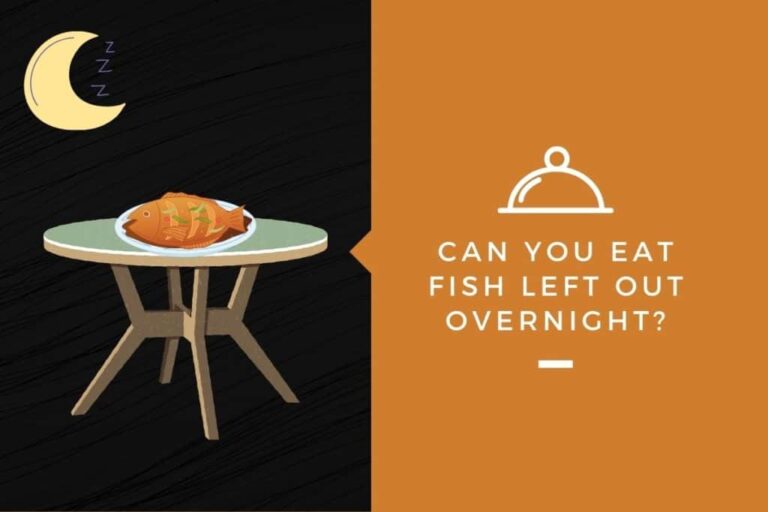Boiling a kettle without water may seem like a trivial mistake, but it can have serious consequences. Not only can it cause damage to the kettle itself, but it can also pose a safety risk for you. Understanding the potential dangers and taking preventative measures is vital to avoid these unfortunate outcomes.
Key Takeaways:
- Boiling a kettle without water can lead to damage to both the kettle and your safety.
- Without water, the kettle can overheat and potentially melt or warp its internal components.
- This can result in electrical issues, such as short circuits or fires.
- The lack of water can cause the kettle to become extremely hot to the touch, increasing the risk of burns.
- Prevent these issues by always ensuring there is an adequate amount of water in the kettle before turning it on.
Risks of Boiling a Kettle Without Water
Boiling a kettle without water poses significant risks. One of the main risks is overheating. Without water to absorb and distribute the heat, the heating element can become extremely hot, leading to potential damage to the kettle’s internal components. This can result in electrical damage, such as short circuits or even electrical fires.
Additionally, the kettle itself can become dangerously hot to the touch, increasing the risk of burns. The lack of water creates a situation where the kettle heats up rapidly, and its exterior can reach scorching temperatures. Touching the heated kettle without protection can result in painful burns and injury.
It’s essential to be aware of these risks and take steps to prevent them. Always ensure there is a sufficient amount of water in the kettle before turning it on. Pay attention to the water level to avoid accidentally boiling the kettle dry. By being cautious and mindful of the risks involved, you can protect yourself, your property, and prevent any potential accidents.
| Risks | Consequences |
|---|---|
| Overheating | Potential damage to internal components, electrical damage, fire hazard |
| Burns | Increased risk of burns due to extremely hot kettle exterior |
Why Boiling a Kettle Without Water Is Dangerous
Boiling a kettle without water may seem like a harmless mistake, but it can have dangerous consequences. The primary danger lies in the process of overheating that occurs when there is no water in the kettle. Without water to absorb and distribute the heat, the internal components of the kettle can reach excessive temperatures, leading to damage and potential hazards.
One of the most significant risks of boiling a kettle without water is the damage it can cause to the kettle itself. The heating element can become extremely hot, potentially melting or warping its internal parts. This can result in electrical issues such as short circuits or even fires. In addition, the kettle’s exterior can become dangerously hot to the touch, increasing the risk of burns.
Understanding the dangers associated with boiling a kettle without water is essential for maintaining safety. It is crucial to prevent accidents by ensuring there is always an adequate amount of water in the kettle before turning it on. Regularly checking the water level and never leaving the kettle unattended while it is boiling are simple but effective safety measures. By taking these precautions, you can minimize the risk of damage, electrical hazards, and personal injury.
| Dangers of Boiling a Kettle Without Water | Prevention Measures |
|---|---|
| Overheating of the kettle’s internal components | Always check the water level before boiling |
| Potential electrical issues and fire hazards | Never leave the kettle unattended while boiling |
| Increased risk of burns from the hot kettle | Regularly clean the kettle to avoid mineral deposits |
Preventing Damage from Boiling a Kettle Without Water
Preventing damage from boiling a kettle without water is essential to ensure its longevity and your safety. By implementing a few simple safety measures, you can significantly reduce the risks associated with this common mistake.
Safety Measures
One of the most important safety measures is to always check the water level in the kettle before turning it on. Ensuring that there is an adequate amount of water prevents the heating element from overheating and causing damage to the internal components. Regularly inspect the water level to avoid accidentally boiling the kettle dry.
Another crucial safety measure is to never leave the kettle unattended while it is boiling. This allows you to quickly address any issues that may arise, such as an empty kettle or potential overheating. Staying vigilant during the boiling process can help prevent accidents and potential damage.
Additionally, cleaning the kettle regularly is recommended to remove any mineral deposits or impurities that could affect its performance. These deposits can hinder the heat distribution and potentially lead to overheating. By keeping the kettle clean, you can ensure optimal functionality and prevent damage.
Water Level Checks
Regularly checking the water level is a simple but effective way to prevent damage from boiling a kettle without water. Before turning on the kettle, ensure that there is enough water to cover the heating element. This will help maintain the proper functioning of the kettle and reduce the risk of overheating.
If the water level is low, always add more water before boiling. It’s better to err on the side of caution and ensure that the kettle is filled adequately to prevent any potential damage. By implementing this water level check, you can protect your kettle and prolong its lifespan.
| Safety Precautions | Benefits |
|---|---|
| Regularly check the water level | Prevents overheating and damage to internal components |
| Never leave the kettle unattended while boiling | Allows for quick response to potential issues |
| Clean the kettle regularly | Removes mineral deposits and impurities for optimal performance |
| Ensure adequate water coverage of the heating element | Reduces the risk of overheating |
By following these preventative measures and conducting regular water level checks, you can protect your kettle from damage and maintain its longevity. Prioritizing safety and staying vigilant during the boiling process is key to preventing accidents and maintaining optimal kettle performance.
Effects of Boiling a Kettle Without Water on Longevity
When you boil a kettle without water, it can have a detrimental effect on its longevity. The excessive heat generated during this process can cause damage to the internal components of the kettle, resulting in decreased performance and potential malfunctions. Over time, these issues can significantly shorten the lifespan of the kettle, leading to frequent repairs or even the need for a replacement.
Not only does boiling a kettle without water affect its internal components, but it can also impact the kettle’s exterior durability. The intense heat can cause the outer surface of the kettle to deteriorate faster than usual, making it more susceptible to wear and tear. This decreased durability can further contribute to a shorter lifespan for the kettle.
To extend the longevity of your kettle and ensure optimal performance, it is crucial to avoid boiling it without water. By always ensuring there is an adequate amount of water in the kettle before use, you can prevent the damaging effects of overheating. Regularly checking the water level and implementing this simple safety precaution will help maintain the integrity of your kettle and prolong its lifespan.
| Effects of Boiling a Kettle Without Water on Longevity | Summary of Effects |
|---|---|
| 1. Damage to internal components | – Decreased performance – Potential malfunctions |
| 2. Decreased exterior durability | – Faster deterioration of outer surface – Increased vulnerability to wear and tear |
| 3. Shortened lifespan | – Frequent repairs or replacement needed |
Conclusion: Boiling a Kettle Without Water – A Risk to Avoid
In conclusion, we strongly advise against boiling a kettle without water due to the significant risks involved. By understanding the potential consequences, we can take the necessary safety precautions to prevent damage and ensure our well-being.
Boiling a kettle without water can lead to overheating, which can cause damage to the kettle’s internal components, electrical issues, and even fires. Additionally, the kettle itself can become dangerously hot, increasing the risk of burns. These hazards highlight the importance of always checking the water level before turning on the kettle.
To minimize the risk, we recommend implementing a few essential safety measures. Firstly, make it a habit to ensure there is an adequate amount of water in the kettle before boiling. Regularly check the water level to avoid accidentally boiling it dry. Additionally, never leave the kettle unattended while it is in use to quickly address any issues that may arise.
By prioritizing safety and prevention, we can protect both ourselves and our kettles from harm. Remember to clean the kettle regularly to remove any mineral deposits or impurities that could affect its performance and durability. These simple steps will help maintain the longevity of your kettle and ensure its optimal performance for years to come.
FAQ
What happens when you boil a kettle without water?
Boiling a kettle without water can lead to serious consequences and potentially cause damage to both the kettle and your safety. The kettle can overheat, potentially melting or warping its internal components. This can result in electrical issues, such as short circuits or even fires. Additionally, the lack of water can cause the kettle to become extremely hot to the touch, increasing the risk of burns.
What are the risks of boiling a kettle without water?
Boiling a kettle without water poses significant risks, including overheating. Without water to absorb and distribute the heat, the heating element can become extremely hot, leading to potential damage to the kettle’s internal components. This can result in electrical damage, such as short circuits or even electrical fires. Additionally, the kettle itself can become dangerously hot to the touch, increasing the risk of burns.
Why is boiling a kettle without water dangerous?
Boiling a kettle without water is dangerous due to the process of overheating that occurs. When there is no water in the kettle, the heating element is not able to dissipate the heat properly, leading to excessive temperatures. This can cause significant damage to the kettle’s internal components, potentially leading to electrical issues and fire hazards. Furthermore, the kettle itself can become extremely hot, posing a safety hazard for anyone handling it.
How can I prevent damage from boiling a kettle without water?
To prevent damage, it’s important to implement safety measures. Always ensure that there is an adequate amount of water in the kettle before turning it on. Regularly check the water level to avoid accidentally boiling it dry. Additionally, never leave the kettle unattended while it is boiling to quickly address any issues that may arise. It’s also recommended to clean the kettle regularly to remove any mineral deposits or impurities that could affect its performance.
What are the effects of boiling a kettle without water on longevity?
Boiling a kettle without water can have significant effects on its longevity. The overheating that occurs can cause damage to the kettle’s internal components, leading to decreased performance and potential malfunctions. This can shorten the kettle’s lifespan and require frequent repairs or replacement. Additionally, the excessive heat can cause the exterior of the kettle to deteriorate faster, affecting its durability.



